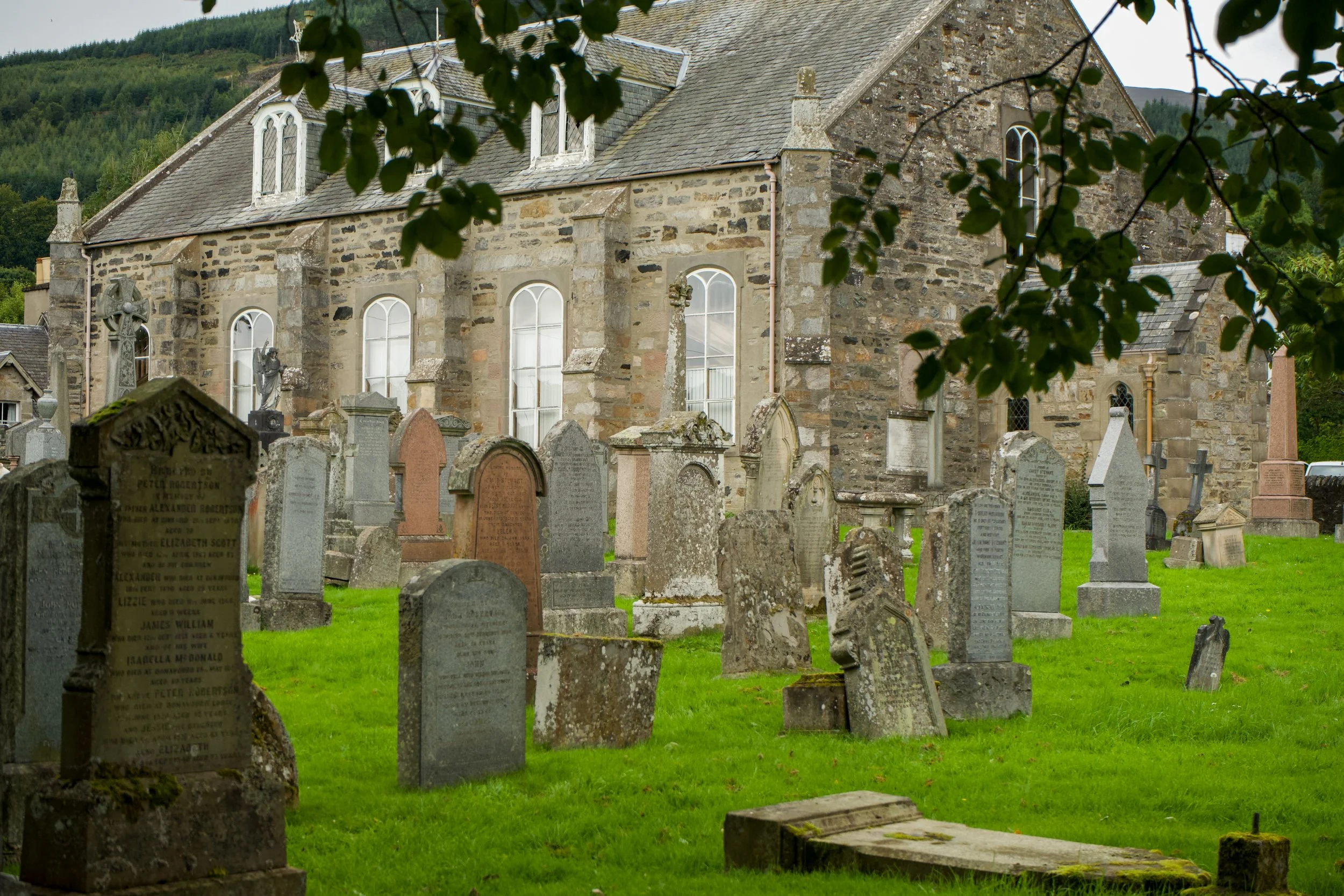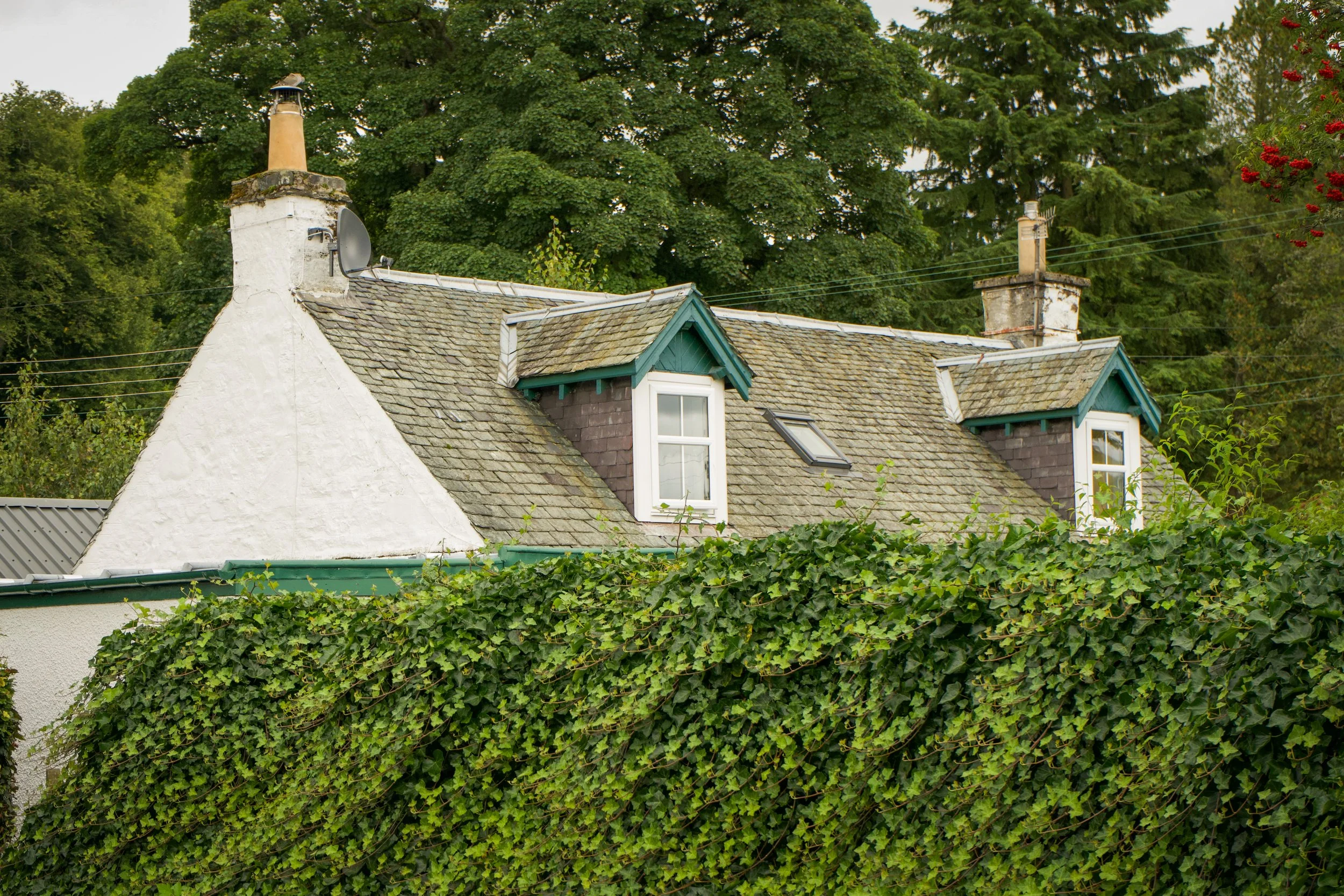Make Time for Moulin
Pitlochry is always busy with visitors at this time of year, but some may not realise that just up the hill there is a lovely little village called Moulin that’s also well worth visiting. There are sweet little cottages, stunning vistas over Pitlochry and the surrounding hills, a decent pub and lots of local history to see.
The pub, The Moulin Inn, was founded in 1695 and has a consistently high reputation. They have their own brewery at the rear of the inn, which makes excellent beers, and the food is great too. You’ll also see the old kirk next to it, which has been made into a heritage centre and is worth looking around, especially if you have an interest in local history.
The Black Castle of Moulin is situated just a little way out of the village in an adjoining field and is also a really interesting spot. Built in 1326 by Sir John Campbell, it was likely burnt down in around 1500, possibly because the occupants had the Black Death. The name of the castle may be a reference to this. An information board located nearby can help you to picture what the castle would have looked like, and visiting during or after some wet weather may also help, as it may have originally been surrounded by a lake!
The Pitlochry Golf Course with its club restaurant is also in the near vicinity of Moulin and several of the sweetest cottages in the village can be rented as holiday lets. And of course, all the many amenities of Pitlochry itself are within easy walking distance.
A little fact that we particularly enjoy is that Robert Louis Stevenson visited Kinnaird Cottage in Moulin for a time from 1881 and wrote several notable works while staying there. He seems to have enjoyed the scenery of the area—this is what he said in one of his letters from the time he spent in Moulin:
“We have a lovely spot here: a little green glen with a burn, a wonderful burn, gold and green and snow-white, singing loud and low in different steps of its career, now pouring over miniature crags, now fretting itself to death in a maze of rocky stairs and pots; never was so sweet a little river. Behind, great purple moorlands reaching to Ben Vrackie. Hunger lives here, alone with larks and sheep. Sweet spot, sweet spot.” (Letter from RLS to Sidney Colvin, mid-June 1881, from The Letters of Robert Louis Stevenson, ed. by Bradford A. Booth and Ernest Mehew, vol iii [New Haven: Yale University Press, 1995], pp. 188-89).
It seems very little has changed in the 120 years since Stevenson wrote his letter. The burn is just as sweet, sheep still graze, and the moorlands are as purple when the heather is out. September is a good time to see it in bloom, and a walk up Ben Y Vrackie is a wonderful way to enjoy it. There is a convenient car park at the bottom of the hill for anyone who fancies the climb and the subsequent views. Just be sure you’re well equipped, even if the weather is sunny when you start out.
Another option if you fancy a walk from Moulin that’s a bit shorter and easier is to head down past Edradour and join the Black Spout walk, which is part of the Pitlochry Path Network. This will allow you to see the spectacular waterfall. Coming from this way means you’ll be approaching from uphill rather than having the short but steep climb up to it—although there is some limited parking at the base if you prefer to do the walk the other way round—and you’ll come out on the Atholl Road near the Blair Athol Distillery. Now you are in a perfect position to explore Pitlochry’s high street on the way back to your car if you have one, whether that’s slowly back up the hill to Moulin or in Pitlochry itself.
So, if you are visiting Pitlochry any time soon, perhaps for the Enchanted Forest, make a little time for a look around Moulin as well. There’s interesting history, sweet cottages, good food, lovely views and spectacular walks. What more could anyone ask for?











